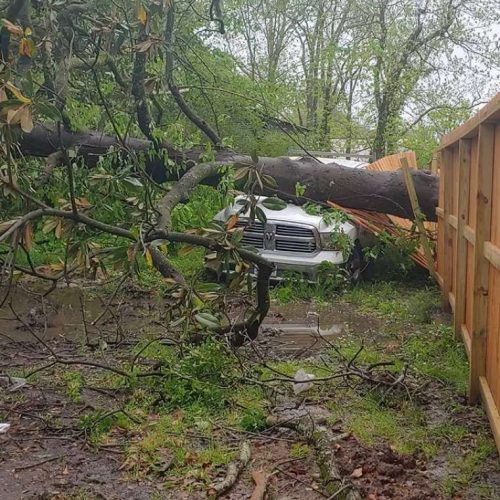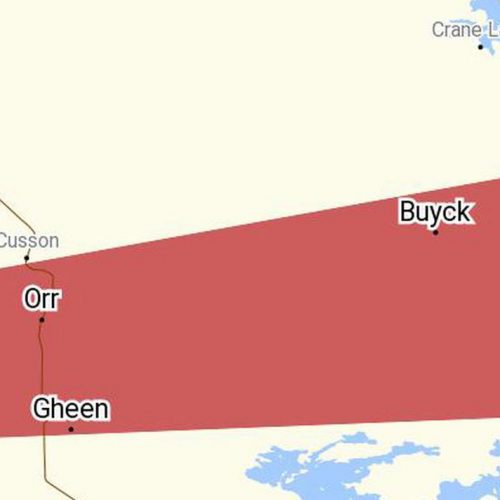KALAMAZOO, MI — When the wind stopped, the people of Kalamazoo emerged to find trees blown down, buildings destroyed and lives lost.
It was the afternoon of May 13, 1980, when a tornado touched down in Kalamazoo and began its 11-mile path of destruction.
Now, 40 years later, the community is battling a new disaster in the COVID-19 pandemic. Though very different sets of circumstances, one local historian sees a common theme — the resilience and cooperation seen among Kalamazoo’s residents when faced with a crisis.
The twister of 1980 left five dead and injured more than 70. More than 1,200 people were displaced from their homes. Officials estimated the tornado caused $50 million in damage and destroyed over 30 homes and businesses.
Many Kalamazoo residents still remember where they were and what they were doing when the tornado hit.
“I certainly do,” said Lynn Houghton, regional history collections curator at the Western Michigan University Zhang Legacy Collection Center.
Houghton, then a student at WMU traveling back to Kalamazoo with her fiance, remembers driving west on I-94 toward Kalamazoo and noting the sky had turned a strange, gray color.
Once back in the city after the tornado had passed, Houghton remembers looking toward downtown from the top of Westnedge Hill. Her clocks had stopped at 4:13 p.m. when the electricity went out at her apartment, she said.
Others in the community may have different memories, and some have closer connections to the historic storm, Houghton said, like those who worshiped in a church that was destroyed or who live in a home that was damaged by the storm.
The tornado struck on a Tuesday afternoon in 1980. The National Weather Service issued a tornado watch at 2:30 p.m.
At 4 p.m., a tornado touched down eight miles west of Kalamazoo’s city limits — in relatively open terrain in Van Buren County. After first touching down, the tornado injured 11 people and damaged or destroyed about 100 buildings.
Less than 10 minutes later, the twister touched down north of West Main Street and Drake Road, and cut a 3-mile-long path through a residential area in Kalamazoo. The twister damaged more than 200 homes and three churches before continuing into the heart of the downtown business district. Pinehurst Boulevard was one of the hardest-hit residential streets.
At 4:17 p.m., the tornado destroyed monuments at Mountain Home Cemetery and collapsed a nearby laundromat wall, killing a young woman.
A man was killed by a falling tree while driving his motorcycle near Bronson Park. Two more people died on Farmer’s Alley when the east wall of what was the Gilmore Brother’s Department Store collapsed. Today, that building is now known as the Kalamazoo City Center.
Next, the tornado crossed Pitcher Street and severely damaged seven industrial plants. After the tornado traveled about 2 more miles, one man was killed while pumping gas at a station in Comstock Township near Amvet Memorial Highway, which is a portion of the I-94 business loop or King Highway.
At 4:25 p.m., only 16 minutes after it first touched down within city limits, the tornado dissipated east of the city.
Kalamazoo was like a “bombed-out city,” then-Gov. William Milliken said after touring the damage with local officials. Milliken declared a state of emergency, which prompted a temporary curfew for residents and dispatched a team of 231 state police troopers to assist local law enforcement.
The tornado was bad, but it could have been so much worse, Houghton said. More than 320 students at St. Augustine Elementary School were sent home about an hour before the tornado destroyed the school.
The tornado leveled two city blocks east of the school and took out 108 windows from the building at 151 S. Rose St. that is now known as the Comerica building.
On the Sunday after the tornado struck, the downtown area was reopened to the public for the first time, said Houghton, who worked at the time at what was the Kalamazoo Public Museum. There was “bumper-to-bumper traffic,” she said, as motorists rushed into downtown to see the damage with their own eyes.
Though it took a horrible toll, the natural disaster bolstered a sense of community in Kalamazoo, Houghton said. People helped those around them. Others raised money to plant new trees in Bronson Park.
Although there are significant differences between a tornado that cut through a city in less than 20 minutes and the current public health crisis keeping residents locked in their homes for weeks, Houghton sees a common thread between the 1980 tornado and the 2020 coronavirus outbreak. In both cases, she said, the Kalamazoo community banded together to help one another.
Amid the COVID-19 pandemic, the people, businesses and institutions of Kalamazoo are doing what they can to weather the metaphoric storm — like through supporting emergency personnel or buying from local restaurants.
“That spirit is still there,” Houghton said.
by Kayla Miller (2020, May 11) mLIVE.com




